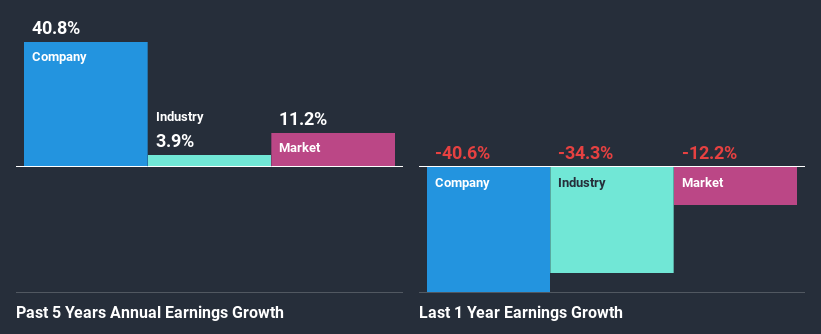Has Pearson plc's (LON:PSON) Impressive Stock Performance Got Anything to Do With Its Fundamentals?

Pearson's (LON:PSON) stock is up by a considerable 11% over the past week. Given that stock prices are usually aligned with a company's financial performance in the long-term, we decided to study its financial indicators more closely to see if they had a hand to play in the recent price move. Particularly, we will be paying attention to Pearson's ROE today.
Return on Equity or ROE is a test of how effectively a company is growing its value and managing investors’ money. Simply put, it is used to assess the profitability of a company in relation to its equity capital.
View our latest analysis for Pearson
How Do You Calculate Return On Equity?
The formula for ROE is:
Return on Equity = Net Profit (from continuing operations) ÷ Shareholders' Equity
So, based on the above formula, the ROE for Pearson is:
6.3% = UK£266m ÷ UK£4.2b (Based on the trailing twelve months to June 2020).
The 'return' is the profit over the last twelve months. So, this means that for every £1 of its shareholder's investments, the company generates a profit of £0.06.
What Has ROE Got To Do With Earnings Growth?
Thus far, we have learned that ROE measures how efficiently a company is generating its profits. We now need to evaluate how much profit the company reinvests or "retains" for future growth which then gives us an idea about the growth potential of the company. Assuming everything else remains unchanged, the higher the ROE and profit retention, the higher the growth rate of a company compared to companies that don't necessarily bear these characteristics.
Pearson's Earnings Growth And 6.3% ROE
At first glance, Pearson's ROE doesn't look very promising. Yet, a closer study shows that the company's ROE is similar to the industry average of 6.9%. Looking at Pearson's exceptional 41% five-year net income growth in particular, we are definitely impressed. Taking into consideration that the ROE is not particularly high, we reckon that there could also be other factors at play which could be influencing the company's growth. Such as - high earnings retention or an efficient management in place.
Next, on comparing with the industry net income growth, we found that Pearson's growth is quite high when compared to the industry average growth of 3.9% in the same period, which is great to see.
The basis for attaching value to a company is, to a great extent, tied to its earnings growth. What investors need to determine next is if the expected earnings growth, or the lack of it, is already built into the share price. By doing so, they will have an idea if the stock is headed into clear blue waters or if swampy waters await. What is PSON worth today? The intrinsic value infographic in our free research report helps visualize whether PSON is currently mispriced by the market.
Is Pearson Making Efficient Use Of Its Profits?
Pearson's three-year median payout ratio is a pretty moderate 28%, meaning the company retains 72% of its income. By the looks of it, the dividend is well covered and Pearson is reinvesting its profits efficiently as evidenced by its exceptional growth which we discussed above.
Additionally, Pearson has paid dividends over a period of at least ten years which means that the company is pretty serious about sharing its profits with shareholders. Upon studying the latest analysts' consensus data, we found that the company's future payout ratio is expected to rise to 49% over the next three years. Regardless, the ROE is not expected to change much for the company despite the higher expected payout ratio.
Summary
Overall, we feel that Pearson certainly does have some positive factors to consider. Despite its low rate of return, the fact that the company reinvests a very high portion of its profits into its business, no doubt contributed to its high earnings growth. With that said, the latest industry analyst forecasts reveal that the company's earnings growth is expected to slow down. To know more about the latest analysts predictions for the company, check out this visualization of analyst forecasts for the company.
This article by Simply Wall St is general in nature. It does not constitute a recommendation to buy or sell any stock, and does not take account of your objectives, or your financial situation. We aim to bring you long-term focused analysis driven by fundamental data. Note that our analysis may not factor in the latest price-sensitive company announcements or qualitative material. Simply Wall St has no position in any stocks mentioned.
Have feedback on this article? Concerned about the content? Get in touch with us directly. Alternatively, email editorial-team@simplywallst.com.

 Yahoo Finance
Yahoo Finance 
